1. Baker KF, Montgomery AA, Abramson R. Brief report: perception and lateralization of spoken emotion by youths with high-functioning forms of autism. J Autism Dev Disord. 2010; 40(1):123–129. PMID:
19653088.
2. Philip RC, Whalley HC, Stanfield AC, Sprengelmeyer R, Santos IM, Young AW, et al. Deficits in facial, body movement and vocal emotional processing in autism spectrum disorders. Psychol Med. 2010; 40(11):1919–1929. PMID:
20102666.
3. Planalp S. Varieties of cues to emotion in naturally occurring situations. Cogn Emotion. 1996; 10(2):137–153.
4. de Gelder B. Why bodies? Twelve reasons for including bodily expressions in affective neuroscience. Philos Trans R Soc Lond B Biol Sci. 2009; 364(1535):3475–3484. PMID:
19884142.
5. Cho HJ, Kim S. Emotion perception and multisensory integration in autism spectrum disorder: a review of behavioral and cognitive neuroscience studies. Sci Emot Sensib. 2018; 21(4):77–90.
6. Doikou-Avloidou M, Dadatsi K. Enhancing social integration of immigrant pupils at risk for social, emotional, and/or behavioral difficulties: the outcomes of a small-scale social-emotional learning program. Emot Behav Difficulties. 2013; 18(1):3–23.
7. Tardif C, Lainé F, Rodriguez M, Gepner B. Slowing down presentation of facial movements and vocal sounds enhances facial expression recognition and induces facial-vocal imitation in children with autism. J Autism Dev Disord. 2007; 37(8):1469–1484. PMID:
17029018.
8. Rozga A, King TZ, Vuduc RW, Robins DL. Undifferentiated facial electromyography responses to dynamic, audio-visual emotion displays in individuals with autism spectrum disorders. Dev Sci. 2013; 16(4):499–514. PMID:
23786469.
9. Carper RA, Moses P, Tigue ZD, Courchesne E. Cerebral lobes in autism: early hyperplasia and abnormal age effects. Neuroimage. 2002; 16(4):1038–1051. PMID:
12202091.
10. Zilbovicius M, Meresse I, Chabane N, Brunelle F, Samson Y, Boddaert N. Autism, the superior temporal sulcus and social perception. Trends Neurosci. 2006; 29(7):359–366. PMID:
16806505.
11. Zatorre RJ, Salimpoor VN. From perception to pleasure: music and its neural substrates. Proc Natl Acad Sci U S A. 2013; 110(Suppl 2):10430–10437. PMID:
23754373.
12. Warrenburg LA. Choosing the right tune: a review of music stimuli used in emotion research. Music Percept. 2020; 37(3):240–258.
13. Fritz T, Jentschke S, Gosselin N, Sammler D, Peretz I, Turner R, et al. Universal recognition of three basic emotions in music. Curr Biol. 2009; 19(7):573–576. PMID:
19303300.
14. Juslin PN. Perceived emotional expression in synthesized performances of a short melody: capturing the listener’s judgment policy. Music Sci. 1997; 1(2):225–256.
15. Laukka P, Eerola T, Thingujam NS, Yamasaki T, Beller G. Universal and culture-specific factors in the recognition and performance of musical affect expressions. Emotion. 2013; 13(3):434–449. PMID:
23398579.
16. Eerola T, Vuoskoski JK. A review of music and emotion studies: approaches, emotion models, and stimuli. Music Percept. 2013; 30(3):307–340.
17. Gabrielsson A, Juslin PN. Emotional expression in music performance: between the performer’s intention and the listener’s experience. Psychol Music. 1996; 24(1):68–91.
18. Juslin PN, Sloboda JA. Music and Emotion: Theory and Research. Oxford, UK: Oxford University Press;2001.
19. Juslin PN, Sloboda JA. Handbook of Music and Emotion: Theory, Research, Applications. New York, NY, USA: Oxford University Press;2010.
20. Juslin PN, Laukka P. Communication of emotions in vocal expression and music performance: different channels, same code? Psychol Bull. 2003; 129(5):770–814. PMID:
12956543.
21. Sloboda JA, Lehmann AC. Tracking performance correlates of changes in perceived intensity of emotion during different interpretations of a Chopin piano prelude. Music Percept. 2001; 19(1):87–120.
22. Demos AP, Chaffin R, Begosh KT, Daniels JR, Marsh KL. Rocking to the beat: effects of music and partner’s movements on spontaneous interpersonal coordination. J Exp Psychol Gen. 2012; 141(1):49–53. PMID:
21668129.
23. Gabrielsson A. Emotion perceived and emotion felt: same or different? Music Sci. 2001; 5(1):Suppl. 123–147.
24. Huron D. Sweet Anticipation: Music and the Psychology of Expectation. Cambridge, MA, USA: The MIT Press;2006.
25. Juslin PN. From everyday emotions to aesthetic emotions: towards a unified theory of musical emotions. Phys Life Rev. 2013; 10(3):235–266. PMID:
23769678.
26. Rigg MG. The mood effects of music: a comparison of data from four investigators. J Psychol. 1964; 58(2):427–438.
27. Scherer KR. Which emotions can be induced by music? What are the underlying mechanisms? And how can we measure them? J New Music Res. 2004; 33(3):239–251.
28. Yang YH, Chen HH. Machine recognition of music emotion: a review. ACM Trans Intell Syst Technol. 2012; 3(3):1–30.
29. Bae S, Kang KD, Kim SW, Shin YJ, Nam JJ, Han DH. Investigation of an emotion perception test using functional magnetic resonance imaging. Comput Methods Programs Biomed. 2019; 179:104994. PMID:
31443867.
30. Yang YH, Liu CC, Chen HH. Music emotion classification: a fuzzy approach. In : Proceedings of the 14th ACM International Conference on Multimedia; 2006 Oct 23-27; Santa Barbara, CA, USA. New York, NY, USA: Association for Computing Machinery;2006. p. 81–84.
31. Behrens GA, Green SB. The ability to identify emotional content of solo improvisations performed vocally and on three different instruments. Psychol Music. 1993; 21(1):20–33.
32. Freitas C, Hunt BA, Wong SM, Ristic L, Fragiadakis S, Chow S, et al. Atypical functional connectivity during unfamiliar music listening in children with autism. Front Neurosci. 2022; 16:829415. PMID:
35516796.
33. Dosen A. Applying the developmental perspective in the psychiatric assessment and diagnosis of persons with intellectual disability: part I--assessment. J Intellect Disabil Res. 2005; 49(Pt 1):1–8. PMID:
15634306.
34. Martínez-Castilla P, Gutiérrez-Blasco IM, Spitz DH, Granot R. The efficacy of music for emotional wellbeing during the COVID-19 lockdown in Spain: an analysis of personal and context-related variables. Front Psychol. 2021; 12:647837. PMID:
33897554.
35. Harris DA, Hayes-Skelton SA, Ciaramitaro VM. What’s in a face? How face gender and current affect influence perceived emotion. Front Psychol. 2016; 7:1468. PMID:
27733839.
36. Beck AT, Epstein N, Brown G, Steer RA. An inventory for measuring clinical anxiety: psychometric properties. J Consult Clin Psychol. 1988; 56(6):893–897. PMID:
3204199.
37. Cho MJ, Kim KH. Diagnostic validity of the CES-D (Korean version) in the assessment of DSM-III-R major depression. J Korean Neuropsychiatr Assoc. 1993; 32(3):381–399.
38. Hirschfeld RM, Williams JB, Spitzer RL, Calabrese JR, Flynn L, Keck PE Jr, et al. Development and validation of a screening instrument for bipolar spectrum disorder: the Mood Disorder Questionnaire. Am J Psychiatry. 2000; 157(11):1873–1875. PMID:
11058490.
39. Jon DI, Hong N, Yoon BH, Jung HY, Ha K, Shin YC, et al. Validity and reliability of the Korean version of the Mood Disorder Questionnaire. Compr Psychiatry. 2009; 50(3):286–291. PMID:
19374975.
40. Heath TP, Melichar JK, Nutt DJ, Donaldson LF. Human taste thresholds are modulated by serotonin and noradrenaline. J Neurosci. 2006; 26(49):12664–12671. PMID:
17151269.
41. Huron D. Affect induction through musical sounds: an ethological perspective. Philos Trans R Soc Lond B Biol Sci. 2015; 370(1664):20140098. PMID:
25646521.
42. Juslin PN, Harmat L, Eerola T. What makes music emotionally significant? Exploring the underlying mechanisms. Psychol Music. 2014; 42(4):599–623.
43. Mohn C, Argstatter H, Wilker FW. Perception of six basic emotions in music. Psychol Music. 2011; 39(4):503–517.
44. Biassoni F, Balzarotti S, Giamporcaro M, Ciceri R. Hot or cold anger? Verbal and vocal expression of anger while driving in a simulated anger-provoking scenario. SAGE Open. 2016; 6(3):2158244016658084.
45. Kerr MA, Schneider BH. Anger expression in children and adolescents: a review of the empirical literature. Clin Psychol Rev. 2008; 28(4):559–577. PMID:
17884263.
46. Laukka P, Neiberg D, Forsell M, Karlsson I, Elenius K. Expression of affect in spontaneous speech: acoustic correlates and automatic detection of irritation and resignation. Comput Speech Lang. 2011; 25(1):84–104.
47. Barrett LF. Are emotions natural kinds? Perspect Psychol Sci. 2006; 1(1):28–58. PMID:
26151184.
48. Lyvers M, Holloway N, Needham K, Thorberg FA. Resilience, alexithymia, and university stress in relation to anxiety and problematic alcohol use among female university students. Aust J Psychol. 2020; 72(1):59–67.
49. Mason O, Tyson M, Jones C, Potts S. Alexithymia: its prevalence and correlates in a British undergraduate sample. Psychol Psychother. 2005; 78(Pt 1):113–125. PMID:
15826409.
50. Levinson J. Musical chills and other delights of music. Davidson JW, editor. The Music Practitioner. Aldershot, UK: Ashgate Publishing;2004. p. 335–351.
51. Allgood R, Heaton P. Developmental change and cross-domain links in vocal and musical emotion recognition performance in childhood. Br J Dev Psychol. 2015; 33(3):398–403. PMID:
26080754.

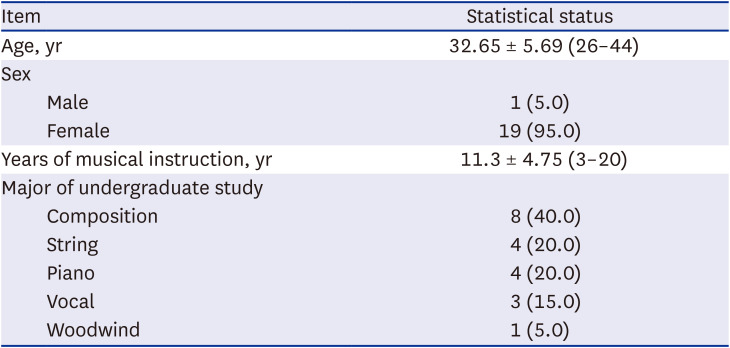
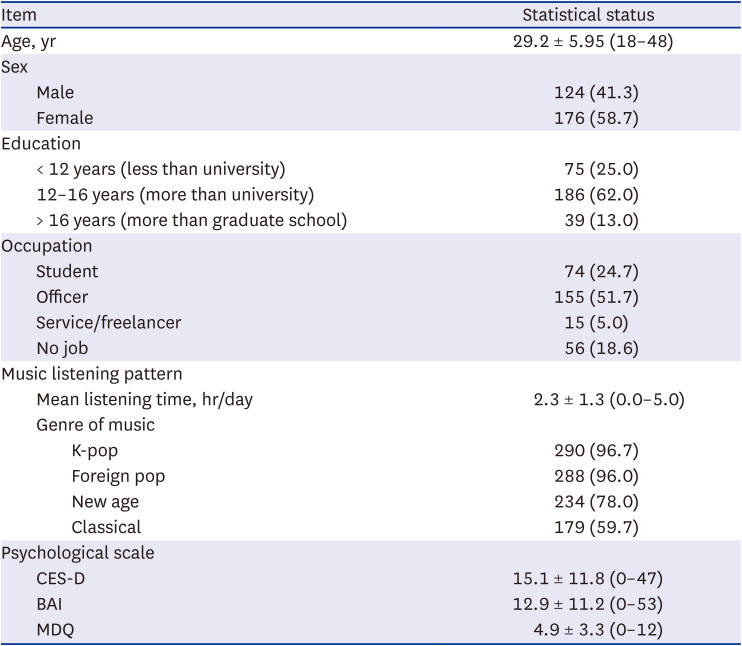
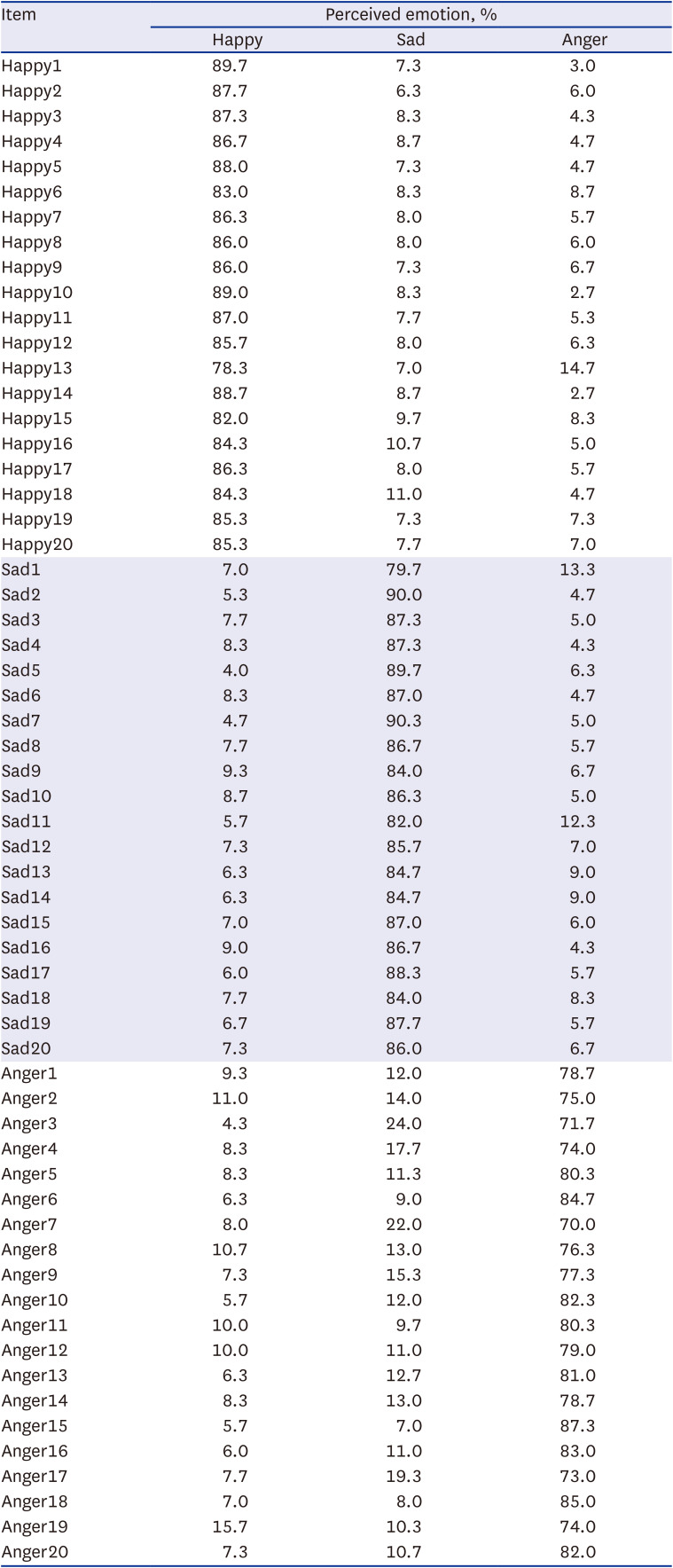
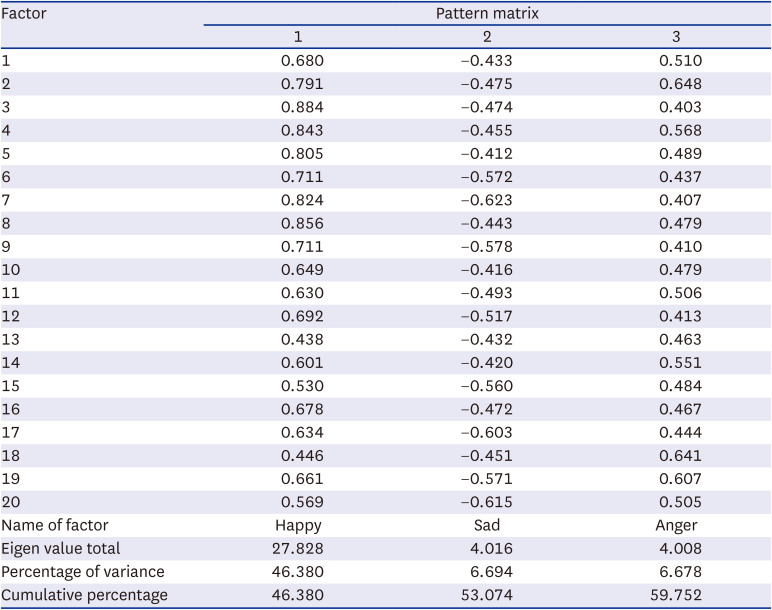
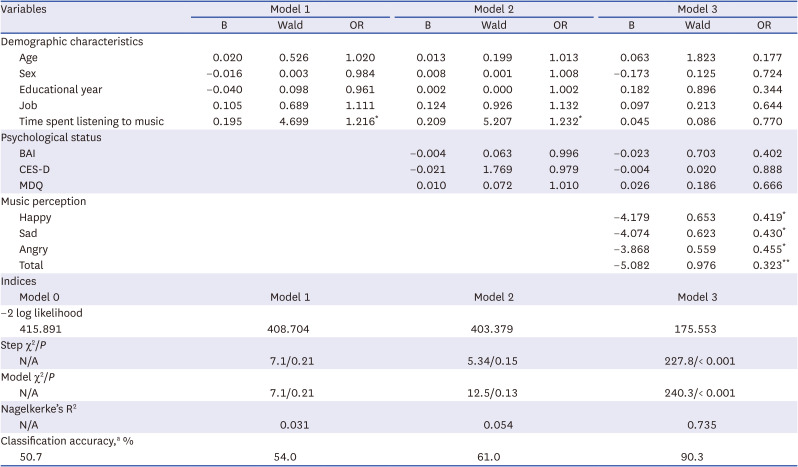




 PDF
PDF Citation
Citation Print
Print



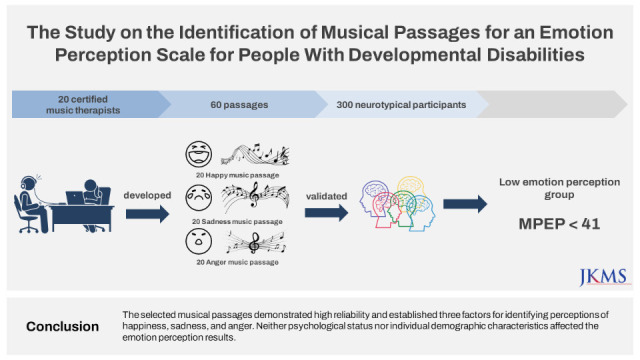
 XML Download
XML Download